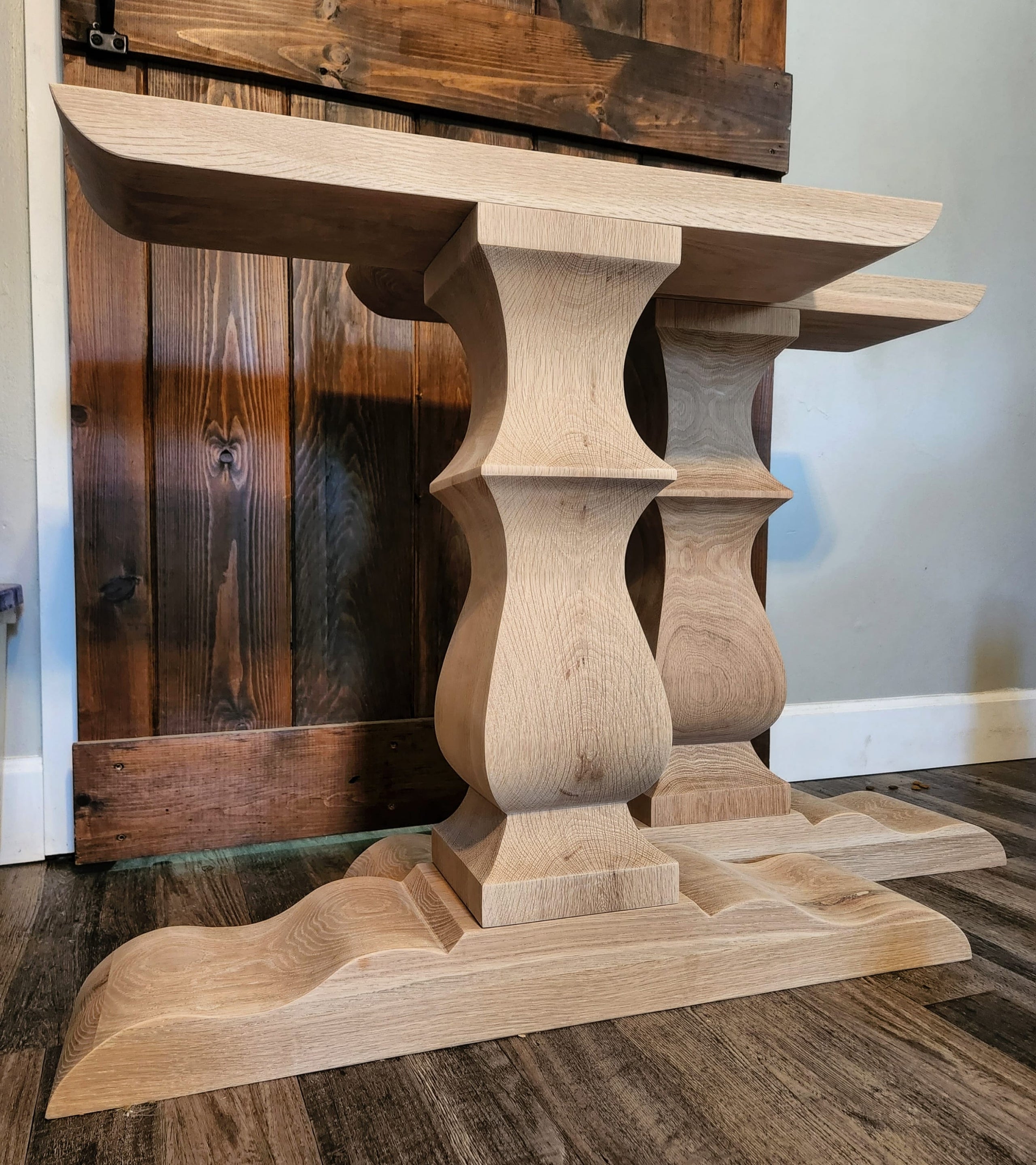Exploring Various Layouts for Dining Room Table Legs to Match Your Visual
Exploring Various Layouts for Dining Room Table Legs to Match Your Visual
Blog Article
A Detailed Check Out Table Leg Styles: Finding the Perfect Match
Choosing the right dining table leg style is vital for both aesthetic charm and useful performance. Conventional 4 legs use classic beauty and security, while the stand base supplies boosted legroom and a modern appearance. For those with larger tables, trestle legs make sure durable assistance, whereas hairpin legs present a mid-century modern-day ambiance with their minimalist design. The x-shaped legs blend contemporary design with improved stability. Each of these choices brings special advantages, making the choice greater than just a matter of preference. Discover even more to uncover which style flawlessly complements your dining room and way of life.
Standard Four Legs
Amongst the various types of eating table leg styles, the traditional four-leg design stays a classic choice for numerous families. This classic arrangement offers a harmonious mix of performance and looks, making it a seasonal favorite. 4 legs give balanced support, making certain the table stays stable and efficient in bearing significant weight. This is specifically advantageous for houses that frequently host big celebrations or use their table for multiple purposes, such as job or crafting.
From a visual point of view, the conventional four-leg layout can be easily adjusted to different indoor styles. Whether crafted from timber, steel, or a combination of products, these legs can be elaborately carved, streamlined and minimalistic, or anything in between. Their flexibility permits them to enhance both rustic and contemporary setups flawlessly.
In addition, the straightforward framework of the four-leg layout facilitates convenience of motion and positioning within a room. Unlike more complicated bases, this style lessens obstructions, giving adequate legroom for restaurants. In summary, the conventional four-leg table leg design marries withstanding beauty with sensible capability, making it a sharp choice for those looking for both form and feature in their dining furniture.
Pedestal Base
Typically celebrated for its classy and space-efficient layout, the pedestal base is a notable choice to the conventional four-leg setup in dining table leg styles. Without edge legs, diners are paid for higher flexibility of movement, making it an excellent selection for round and oblong tables that advertise more intimate and inclusive events.
Furthermore, the pedestal base's main assistance can handle substantial weight, enabling using much heavier tabletops, such as marble or thick hardwood. This stamina combined with its visual flexibility makes the stand base a popular option in both traditional and contemporary indoor setups. It can seamlessly integrate with different layout motifs, from traditional sophistication to minimalist modernity. The central column itself offers a canvas for elaborate designs and imaginative expressions, adding an aspect of visual interest beneath the table. In summary, the pedestal base integrates functionality snappy, making it a fine-tuned and useful alternative for diverse dining settings.
Trestle Legs
Trestle legs give a durable and timeless foundation for dining tables, characterized by their straight cross-bracing and strong support light beams. Stemming from medieval times, this style has developed yet preserved its vital framework, making it a seasonal Homepage fave in both standard and modern setups. The central trestle light beam, frequently supported by 2 or even more upright posts, provides remarkable stability, permitting larger table sizes without the need for extra legs.
A considerable benefit of trestle leg tables is the sufficient legroom they offer. Unlike tables with four corner legs, the absence of obstructions at the table's edges supplies unblocked area for chairs and restaurants, enhancing convenience and ease of access. This makes trestle tables optimal for fitting bigger events, whether in a dining-room or a banquet hall.
The visual adaptability of trestle legs is significant. Readily available in a selection of materials such as timber, steel, and composite, they can be ended up to match a wide variety of interior designs. From rustic farmhouse to smooth contemporary styles, trestle legs can be tailored to fit individual tastes. Their enduring appeal and useful advantages make trestle legs an engaging selection for those looking for both design and functionality in their dining table.
Barrette Legs

The charm of barrette legs lies in their simpleness and versatility - dining room table legs. Readily available in a series of products, consisting of steel and brass, they can be finished in various shades to match different indoor styles. Whether paired with a rustic wood table top or a contemporary glass surface area, hairpin legs effortlessly mix capability with a touch of vintage appeal
Sturdiness is another remarkable function of hairpin legs. Regardless of their fragile look, these legs are crafted to birth substantial weight, ensuring the eating table remains secure and protected. Additionally, they are relatively very easy to install, making them a preferred choice for DIY lovers and specialist furniture manufacturers alike.
X-Shaped Legs

Built from products such as steel, timber, or a combination of both, X-shaped legs can be tailored to match numerous layout choices. Steel legs commonly provide a sleek and industrial feeling, ideal for loft-style apartment or condos and modern dining spaces.
Additionally, the design behind X-shaped legs makes sure also weight circulation, read lessening the threat of wobbling and boosting toughness. This makes them particularly fit for larger table that call for added support. Basically, X-shaped legs mix sensible engineering with modern visual appeals, making them an ageless option anchor for varied dining environments.
Verdict
A comprehensive understanding of table leg styles exposes the distinct attributes and advantages of each layout. Standard 4 legs provide security and classic allure, while stand bases give legroom and a structured appearance. Trestle legs ensure durable assistance for larger tables, and barrette legs introduce a mid-century modern-day aesthetic. X-shaped legs integrate contemporary design with boosted security. Choosing the appropriate leg design ensures both useful and visual fulfillment in any kind of eating space.
Report this page